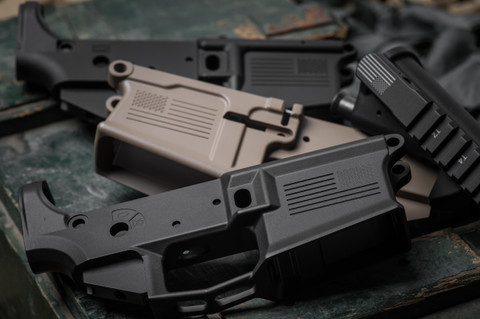Building an AR-15: Complete Builder’s Parts List & Guide
Posted by Andrew Maas on Jul 30th 2024
Building an AR-15: A Builder’s Parts List & Complete Guide
Last updated: September 2025 • Author: Aerospace Arms
Introduction
The AR-15 rifle is known for its versatility and stands out as a favorite among gun enthusiasts and builders. Its modular design allows for a wide range of modifications, enabling users to tailor their rifles to specific preferences or operational needs. Understanding each component of the AR-15 is crucial for anyone looking to begin a custom build. This knowledge not only enhances the building experience but also helps ensure the creation of a reliable firearm. Whether for sport, hunting, or defense, the journey to building your AR-15 starts with a deep dive into its essential parts and their functions.
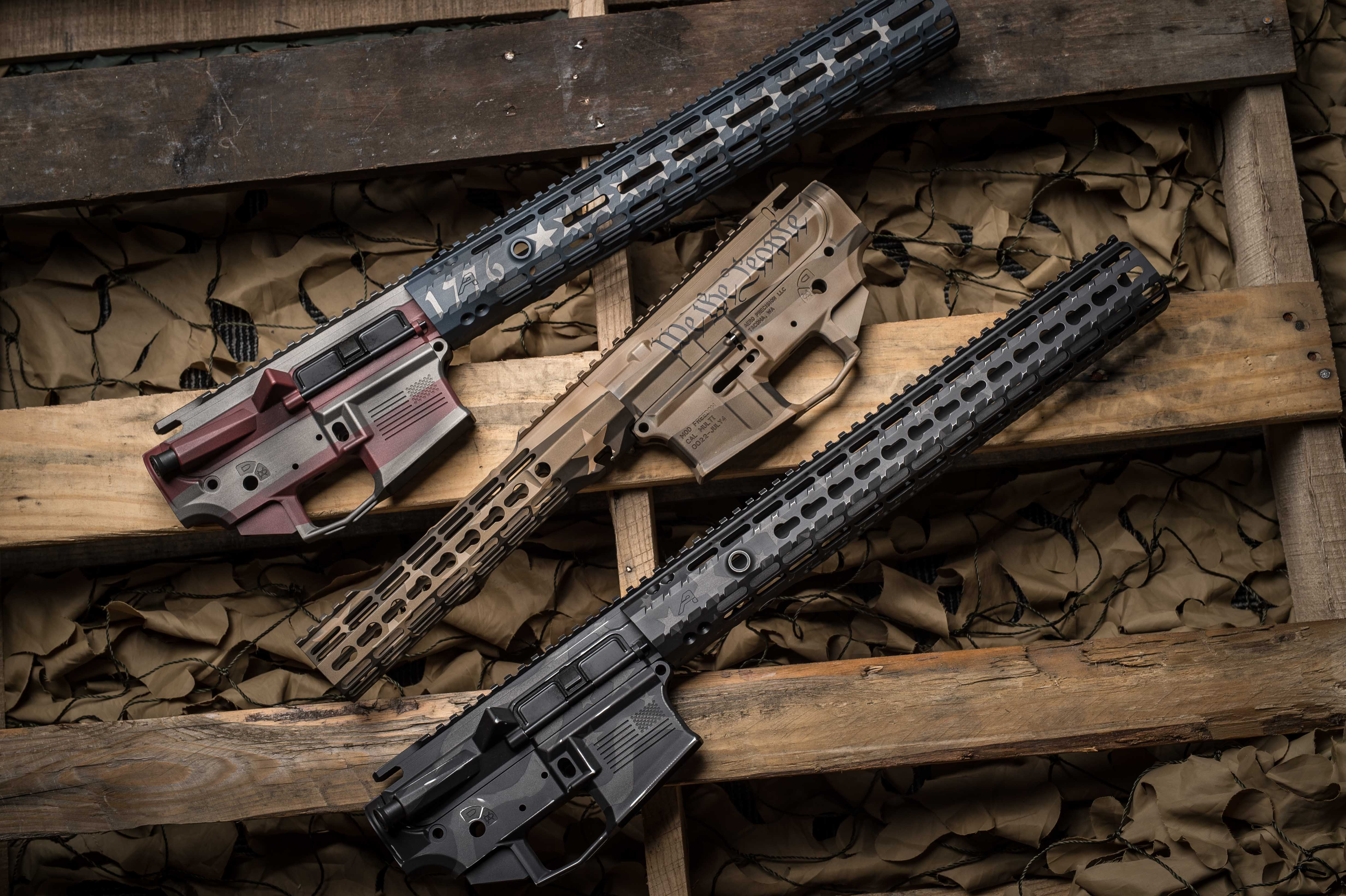
In the next sections, we'll explore the key components of a modern AR-15 rifle to better equip you with the knowledge you need to put together a successful and highly satisfying build.
Key takeaways
- A complete AR-15 parts list for lowers, uppers, barrels, BCGs, gas systems, stocks, optics, and more.
- How to choose barrel length, profile, twist rate, and chamber for your use case.
- What “mil-spec” compatibility means and how to avoid fitment issues.
- Links to parts and tools so you can build with confidence.
AR-15 Build Considerations (Compatibility, Quality, Tools, Function)
Before getting into the specifics of what makes up an AR-15 build, let's discuss some essential and foundational considerations all AR-15 builders should think about before starting their build.
- Compatibility: Take time to ensure that all components are compatible and adhere to mil-spec dimensions. This helps avoid issues of poor fitment or malfunction. Many manufacturers advertise parts as “better than mil-spec,” but mixing too many non-mil-spec variations can lead to compatibility problems. If you go non-mil-spec, consider sticking with one manufacturer for fewer headaches.
- Quality: Invest in high-quality components from reputable manufacturers to ensure reliability, durability, and performance. Value often rises quickly as you move from budget to mid-tier, then tapers at the high end. Mid-tier parts typically offer the best performance-per-dollar; quality control is the real differentiator when many companies produce similar patterns.
- Tools: Acquire the necessary tools for assembly—vise, vise blocks, torque wrenches, and pin punches—to prevent damage and ensure proper assembly. We offer tools and kits to get you started.
- Functionality: Consider your intended use and select components that align with it. Precision builds, tactical setups, and competition rifles each have different priorities—just like you wouldn’t build a rally car the same way you’d build a Formula One car.
- Legal Considerations: Know your federal, state, and local laws regarding AR-15 assembly, required transfers, features, and shipping. Laws can change; confirm current requirements and complete all transfers through a licensed FFL. Supporting advocacy groups is a personal choice—always prioritize compliance and safe, responsible ownership.
With that established, building an AR-15 from scratch or upgrading an existing one requires a solid understanding of its fundamental parts. Each component plays a specific role in operation, affecting performance, looks, and ergonomics. OKAY, now let's finally delve into the parts that make up a modern AR-15 build.
Lower Receiver

The lower receiver is considered the heart of the AR-15, housing the fire control group (trigger, hammer, and safety), magazine well, and attachment points for the buffer kit/stock and upper receiver. As the only standard part of the rifle that's federally regulated, it bears the serial number and is technically considered the firearm itself. This one part will ship to your local FFL for transfer.
Selecting a lower receiver involves choices between materials (aluminum, polymer, or specialty alloy), construction (forged, billet, cast, or printed), and whether you want a bare lower (stripped) or a lower with all parts installed (complete). You can also buy an 80% lower and do the millwork yourself; we generally suggest at least a stripped lower that’s already been machined to spec to prevent headaches.
If you decide to purchase a stripped lower and assemble it yourself, you don’t have to buy every small part separately. Everything can be purchased in a lower parts kit that includes the required small parts to complete a stripped lower.
Here are the lower receiver parts and their functions:
- Lower Receiver (Stripped): The main component that houses the fire control group, magazine well, and attachment points for the buffer kit/stock and upper receiver. Marked with manufacturer, model, caliber, and serial number; must ship to a local FFL for transfer. Check state and local laws for additional requirements.
- Buffer Retainer: Retains the buffer and recoil spring within the lower; holds these components in place during operation (included in most lower parts kits).
- Buffer Retainer Spring: Applies tension to the buffer retainer (included in most lower parts kits).
- Takedown Pin Spring: Applies pressure to the takedown pin, keeping it in place while allowing easy disassembly (included in most lower parts kits).
- Takedown Pin Detent: Interacts with the takedown pin to hold it securely open or closed (included in most lower parts kits).
- Takedown Pin: Works with the pivot pin to allow quick separation of upper and lower for maintenance (included in most lower parts kits).
- Safety Detent: Provides tactile feedback when switching between safe and fire (included in most lower parts kits).
- Safety Detent Spring: Applies pressure to the safety detent (included in most lower parts kits).
- Safety Selector: Lever used to engage or disengage the safety (included in most lower parts kits).
- Pistol Grip Screw (with Lock Washer): Secures the pistol grip to the lower (included in most lower parts kits).
- Pistol Grip: The handle where your strong hand grips the rifle. Try different grips to find the best fit.
- Bolt Catch / Roll Pin / Plunger / Spring: Holds the bolt carrier group open after the last round; sub-components support its function (included in most lower parts kits).
- Magazine Catch / Button / Spring: Releases the magazine; spring provides tension (included in most lower parts kits).
- Pivot Pin / Detent / Spring: Works with the takedown pin for disassembly (included in most lower parts kits).
- Trigger Guard Pivot Roll Pin & Trigger Guard Assembly: Secures and forms the trigger guard (included in most lower parts kits).
- Trigger / Springs / Disconnector: Initiates firing; disconnector ensures semi-auto function (included in most lower parts kits). Many great aftermarket triggers are available.
- Hammer / Hammer Spring / Hammer & Trigger Pins: Strikes the firing pin; pins allow the assemblies to pivot (included in most lower parts kits).
- Magazine: Feeds cartridges into the chamber. Keep several on hand for range sessions. Shooter’s tip: If your rifle isn’t cycling consistently, swap magazines first—often the easiest fix.
NOTE: The buffer kit and stock are typically considered part of the lower, but we’ll cover those components separately below.
Upper Receiver

The upper receiver contains the charging handle, bolt carrier group, gas system, barrel, and handguard. It’s where the action happens after a round is fired and is also where most of your build budget should go. Uppers can be customized for barrel lengths and calibers, handguard types, and optics mounting solutions. Compatibility with the lower receiver is crucial for a seamless fit and operation. Most uppers can be swapped across compatible lowers to change setups without buying another complete lower.
Here are the upper receiver parts and their functions:
- Upper Receiver Housing (Stripped): Contains the charging handle and BCG; mates with the barrel, barrel nut, and handguard. A fundamental component that influences accuracy.
- Charging Handle: Used to manually chamber a round; the latch locks it in place and the spring returns it forward. The roll pin secures sub-components.
- Forward Assist (spring pin, plunger, pawl spring pin, pawl spring, pawl detent, pawl): Helps push the bolt fully into battery if needed. Many uppers omit it; others keep it “just in case.”
- Ejection Port Cover (cover, cover pin, ring, cover spring): Protects the ejection port from debris and fouling.
- Handguard: Protects your hand from heat and provides a mounting surface for foregrips, lights, lasers, and backup sights. Designs vary widely—if you don’t like one, there are many others.
- Barrel Nut: Secures the barrel to the upper and provides a mounting point for the handguard; torque to spec for alignment and stability.
- Gas Block (clamp or screw): Regulates gas from the barrel to the gas tube to cycle the action; some users pin the block to the barrel for maximum security.
- Gas Tube (tube and roll pin): Transfers gas from the barrel to the BCG; direct-impingement system.
- Barrel: Rifled tube the bullet travels through; accuracy driver. More on barrels below.
- Crush Washer: Helps properly time and secure muzzle devices.
- Muzzle Device: Reduces recoil, redirects blast, or reduces flash (flash hiders, compensators, brakes).
- Carry Handle with Rear Sight (optional): Combines a carry handle with an integrated rear sight for co-witness or irons-only setups.
Barrel
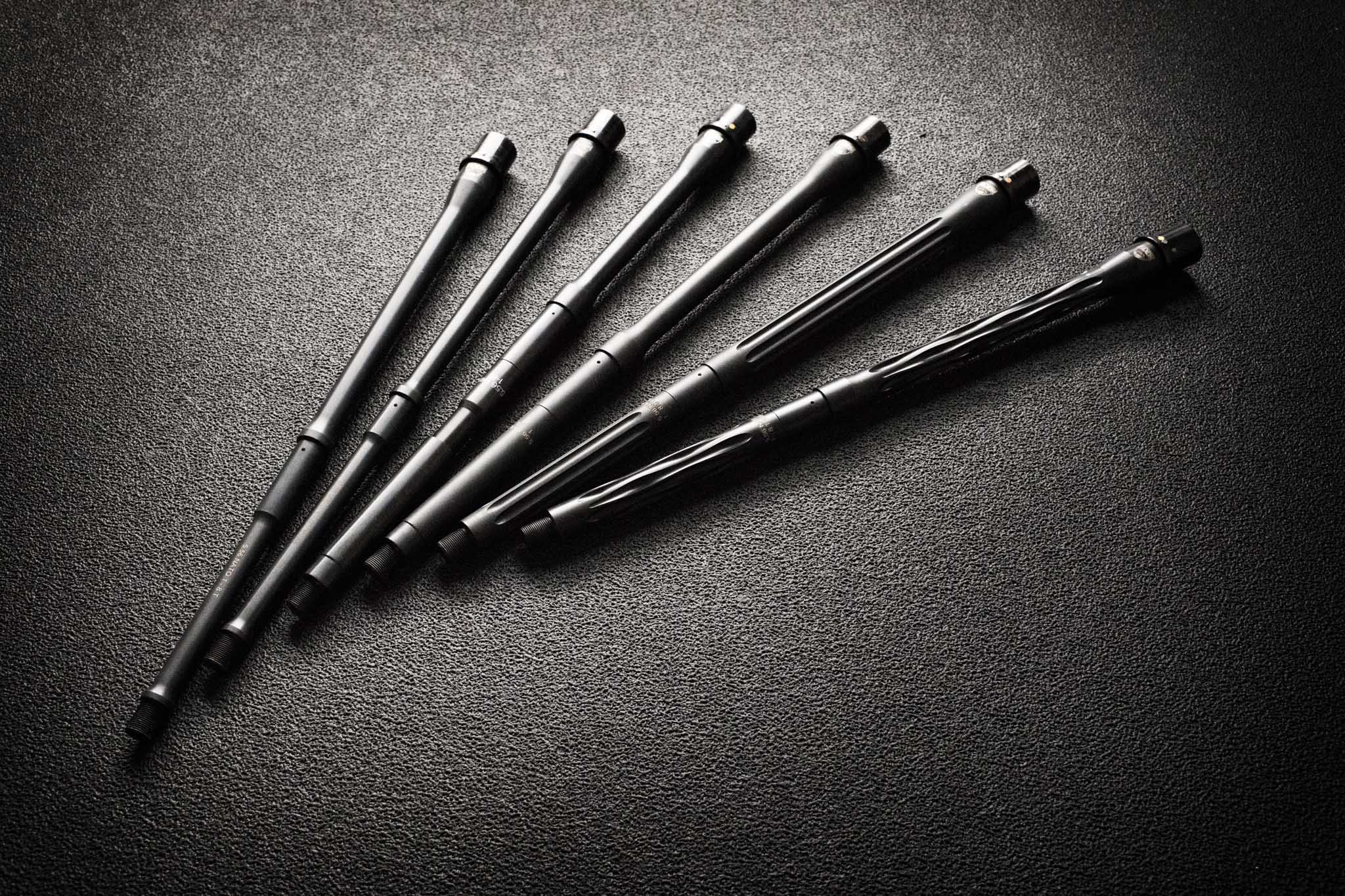
In the realm of AR-15 customization, few components are as critical to performance as the barrel. It affects accuracy, range, and overall shooting experience. With many options available, it can be daunting; here are the key factors:
- Length: Common choices range from 10.5" to 20". Longer barrels generally yield higher velocity and better precision potential; shorter barrels favor maneuverability.
- Profile: Government, lightweight, medium, and heavy profiles balance heat handling, rigidity, and weight differently.
- Material: Stainless steel (often favored for precision) and chrome-moly steel (durable and cost-effective) are most common.
- Twist Rate: Expressed as turns per inch (e.g., 1:7). Faster twists stabilize heavier bullets; 1:7–1:8 cover most 55–77gr loads.
- Chamber: Popular options include .223 Wylde, 5.56x45mm NATO, and .300 Blackout.
Popular barrel types and profiles:
- Match Grade: Tighter tolerances and finish work for enhanced precision.
- Pencil: Slim, lightweight; great for carry weight and quick transitions.
- Fluted: Reduces weight and can aid cooling while maintaining rigidity.
- Chrome-Lined: Excellent durability and corrosion resistance for high-volume use.
- Carbon Fiber: Significant weight savings with strong rigidity.
Essential considerations when choosing a barrel:
- Purpose: Long-range, general-purpose, or home defense?
- Budget: Mid-tier options often offer the best value.
- Compatibility: Match chamber, gas system length, and gas block diameter.
- Research: Read reviews and test data; consider manufacturer reputation.
- Quality Control: Choose brands known for consistency and inspection.
Bolt Carrier Group (BCG)
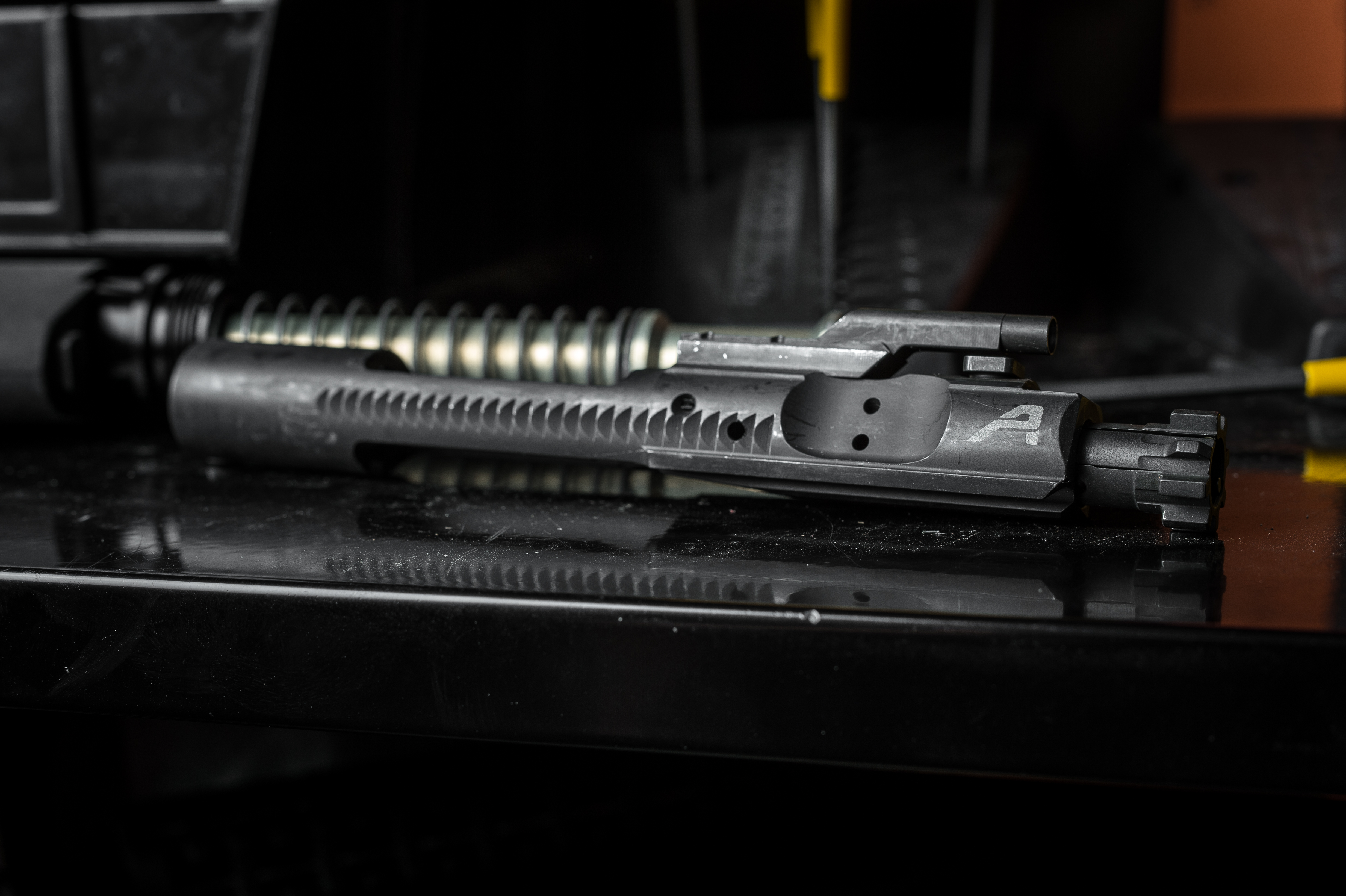
The BCG is responsible for chambering, firing, extracting, and ejecting rounds with reliability. Understanding the components helps you pick coatings and configurations that match your goals.
Anatomy of an AR-15 Bolt Carrier Group
- Bolt: Locks into the barrel extension, extracts spent casings, and chambers new rounds (bolt head, extractor, ejector, gas rings).
- Carrier: Houses the bolt; includes the gas key (interfaces with the gas tube) and cam pin slot to rotate the bolt.
- Gas Key: Staked to prevent loosening; channels gas to cycle the action.
- Firing Pin: Strikes the primer; retained by a firing pin retaining pin.
- Cam Pin: Enables bolt rotation during the cycle.
Exploring BCG Options
- Standard AR-15 BCG: Full-mass carrier for semi-auto rifles; durable and cost-effective.
- Standard (M16) BCG: Full-mass carrier commonly used for added durability and mass in semi-auto builds (check local laws).
- Low-Mass / Lightweight BCG: Material removed to reduce weight for faster cycling and potentially reduced felt recoil.
- Nickel Boron (NiB) Coated: Enhanced lubricity and corrosion resistance; easier cleaning.
- Adjustable Gas Key: Allows fine-tuning for suppressors or specific loads.
BCG Coatings and Finishes
- Phosphate (Parkerized):
- Pros: Good corrosion resistance, durable, cost-effective.
- Cons: Higher friction than some coatings; may require more frequent cleaning/lube.
- Black Nitride (Melonite):
- Pros: Excellent corrosion and wear resistance; smooth, easy-to-clean surface; increased surface hardness; cost-effective.
- Cons: Slight color variation possible; availability varies by brand.
- Nickel Boron (NiB):
- Pros: Great corrosion resistance, low friction, easy to clean.
- Cons: Higher cost; choose reputable NiB providers to avoid flaking.
- Hard Chrome:
- Pros: Outstanding corrosion and wear resistance; very smooth; heat resistant.
- Cons: More expensive; fewer options on the market.
- Titanium Nitride (TiN):
- Pros: Extremely hard, low friction, heat resistant; distinctive gold/copper appearance.
- Cons: Premium price; limited availability.
- Diamond-Like Carbon (DLC):
- Pros: Extremely hard, very low friction, chemically inert, easy to clean.
- Cons: Premium price; fewer options.
- Cerakote:
- Pros: Huge color/custom options; good corrosion and scratch resistance.
- Cons: Application complexity; thin coating—best reserved for exterior parts, not high-tolerance surfaces like a BCG’s bearing surfaces.
At the core of the rifle's functionality, the BCG’s material, mass, and finish affect reliability, smoothness, and maintenance—choose based on purpose and ammo/suppressor plans.
Gas System
The gas system uses propellant gas from a fired round to cycle the action. The length (pistol, carbine, mid-length, or rifle) affects recoil and shooting feel. A properly tuned system minimizes wear and improves reliability. Gas system length is determined by the barrel gas port location and gas block journal diameter—so when ordering a barrel, match the gas tube length and gas block size you’ll need. See our gas blocks and gas tubes.
Handguards
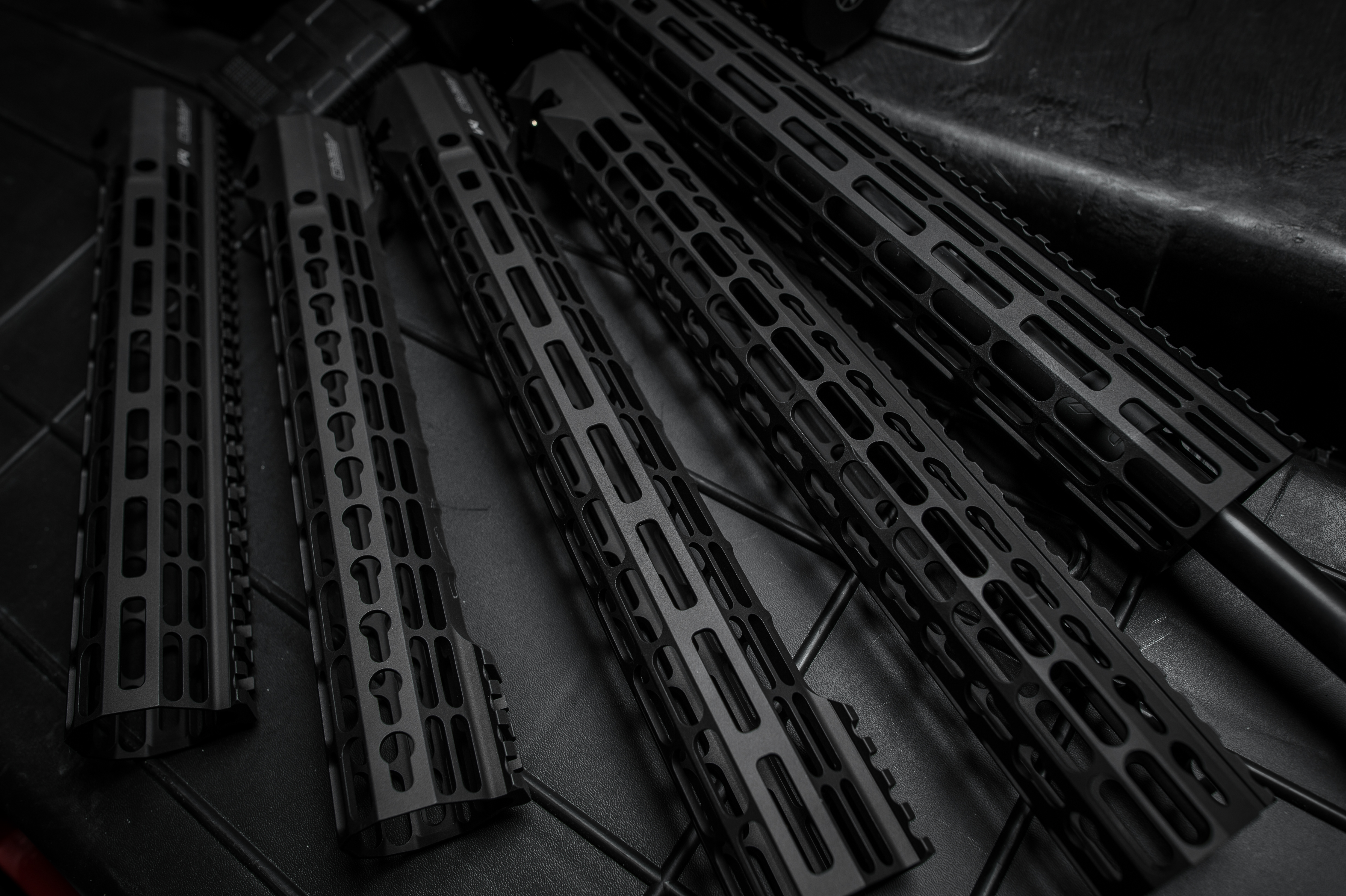
Handguards protect your hand from heat and provide mounting space for foregrips, lights, lasers, and sights. They come in free-floating or drop-in styles; free-float options avoid contacting the barrel for potential accuracy gains. Pay attention to the mounting system (e.g., M-LOK vs. Picatinny) so your accessories attach correctly.
Stock and Buffer System
The stock and buffer system both influence operation, comfort, and performance. Let’s break them down.
Stocks
- Fixed Stocks: Stable, consistent cheek weld; often preferred for precision and longer-range shooting. Some include storage compartments.
- Adjustable Stocks: Let you change length of pull for body size, armor, or position. Common for tactical and general-purpose builds.
Buffer System
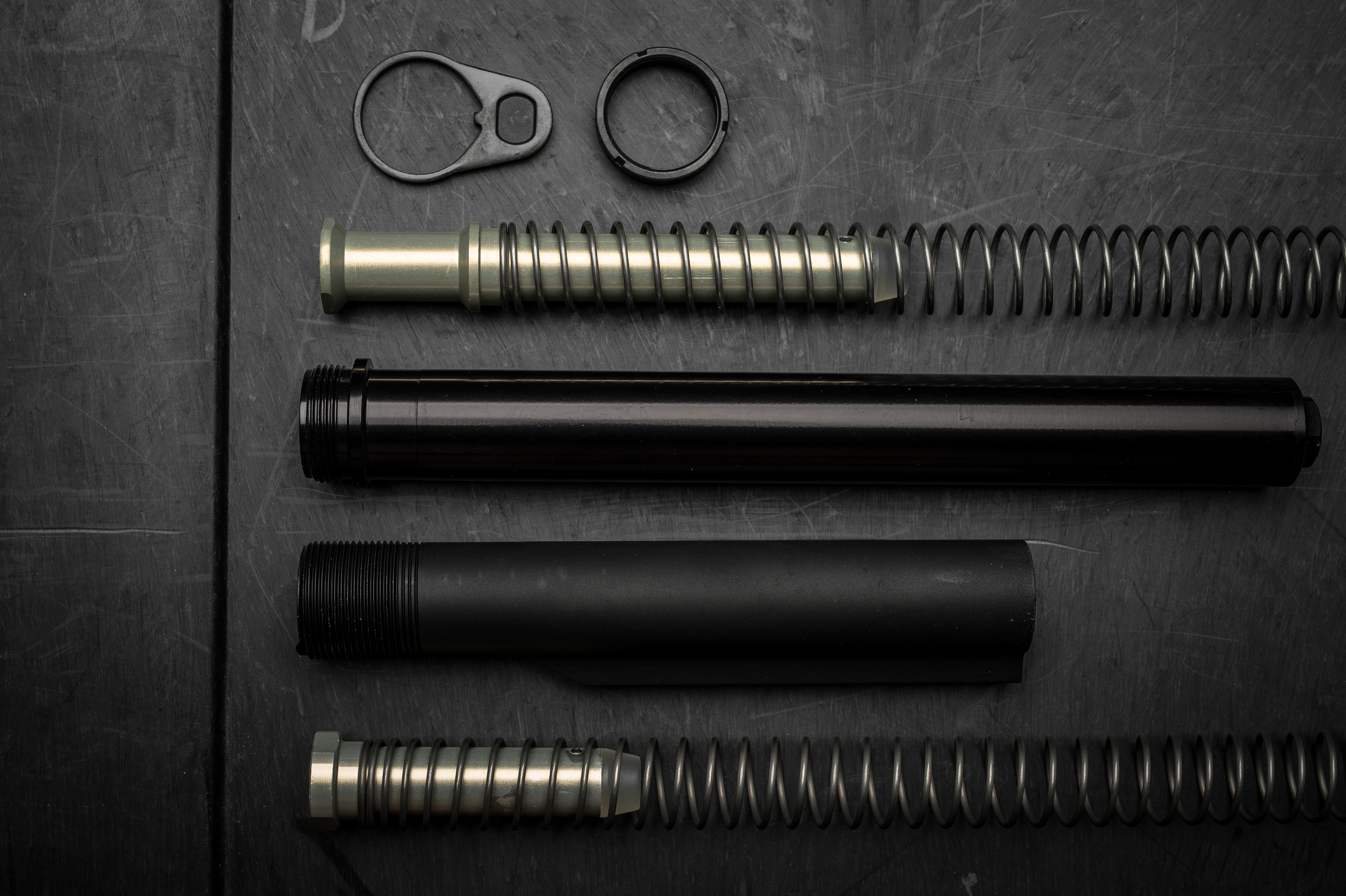
- Buffer Tube (Receiver Extension): Houses the buffer and spring; also the stock attachment point. Two sizes: mil-spec and commercial—match your stock to the tube type.
- Buffer Spring: Returns the BCG forward; tension and length impact cycle rate and feel.
- Buffer: Weighted cylinder that tempers the BCG’s rearward movement; available in different weights (e.g., carbine, H, H2, H3) to fine-tune behavior.
- End Plate & Castle Nut: Secure the tube and often provide sling attachment points.
Together, the stock and buffer system shape stability, comfort, and reliability. Choose based on barrel length, gas system, and intended use. Explore buffer kits and stocks.
Sights and Optics
Iron sights or backup sights—fixed or flip-up—provide a simple and reliable aiming solution. For enhanced accuracy and range, optics like red dots, holographic sights, LPVOs, and scopes mount to the upper receiver. Choose based on use case: close-quarters, general-purpose, or distance.
Accessories and Customization
Beyond core components, there’s a world of accessories to personalize your AR-15—enhanced triggers for smoother operation, ergonomic grips for better control, ambidextrous controls, lights, and more. There are thousands of options and new ones arrive daily. (Yes, even novelty add-ons.) Build for function first—then style it how you like.
Popular Picks for Your Build
Frequently Asked Questions
- What parts are required to build an AR-15 from a stripped lower?
- At minimum: stripped lower, lower parts kit (trigger, springs, pins, controls), buffer tube, buffer, spring, stock, complete upper (or stripped upper plus barrel, barrel nut, gas block/tube, handguard, charging handle, BCG), sights/optic, and magazines.
- What AR-15 barrel length should I choose?
- 16" is the most common all-around length. 18–20" favor velocity/precision; 10.5–14.5" improve maneuverability but may require tuning (and legal compliance).
- What twist rate works for most 5.56 loads?
- 1:7 or 1:8 offers broad compatibility from ~55–77gr. Heavier match bullets (69–77gr) often prefer 1:7.
- Mil-spec vs. commercial buffer tube?
- Mil-spec tubes have a slightly smaller outer diameter and broader stock compatibility. Match your stock to the tube type you buy.
- Do I need a full-auto (M16) BCG for a semi-auto AR-15?
- Many shooters use M16-profile carriers in semi-auto builds for durability and mass. It’s legal in many jurisdictions, but always follow local laws.
Conclusion
With a clear AR-15 parts list—lower and upper components, barrel selection, BCG coatings, gas system lengths, handguards, stocks, and optics—you can plan a build that fits your purpose and budget. If you’re ready to start, explore our curated barrels, BCGs, gas system parts, handguards, and lower parts kits to get everything in one place—backed by fast shipping and support from Aerospace Arms.

